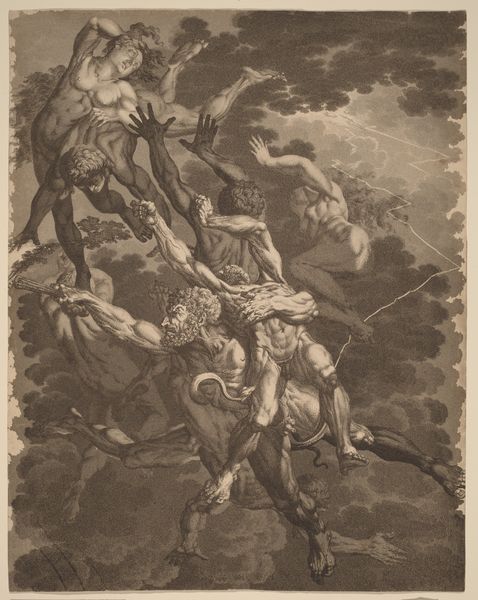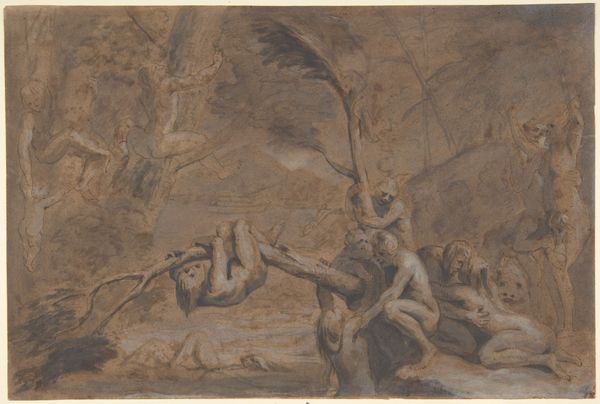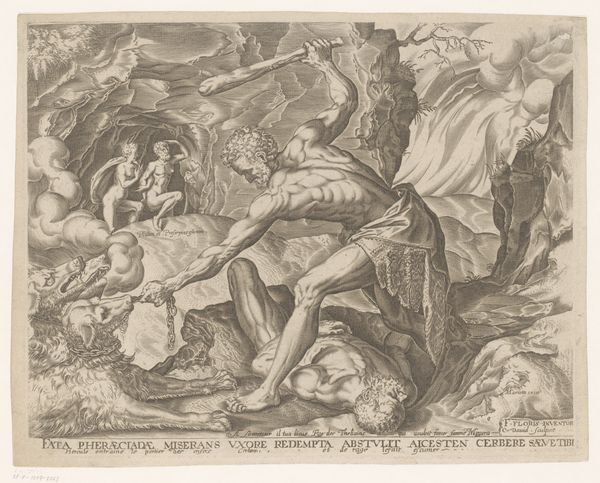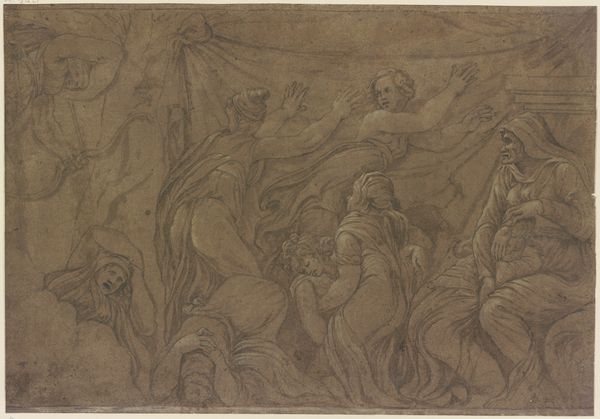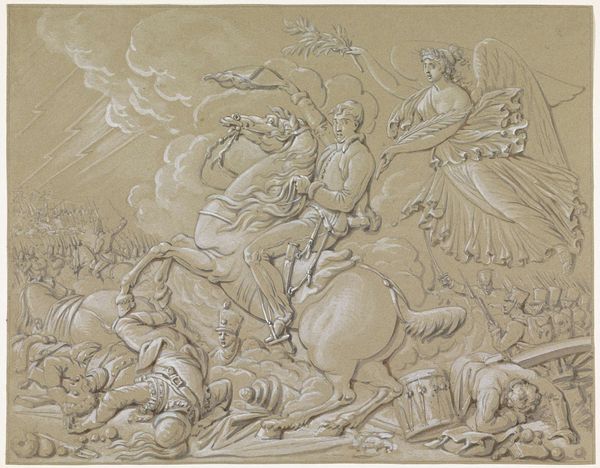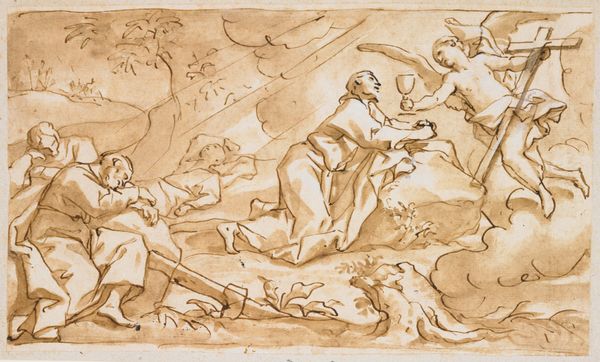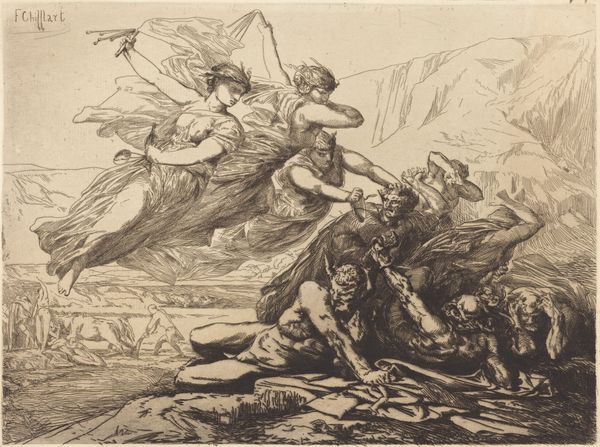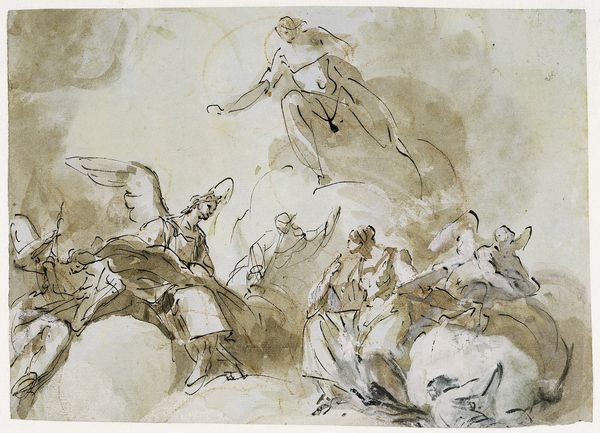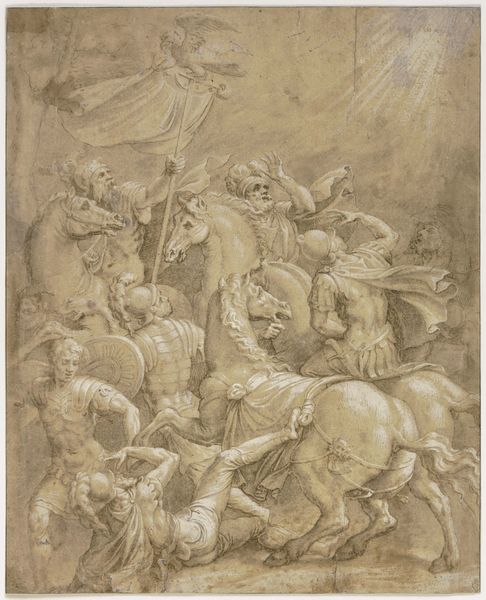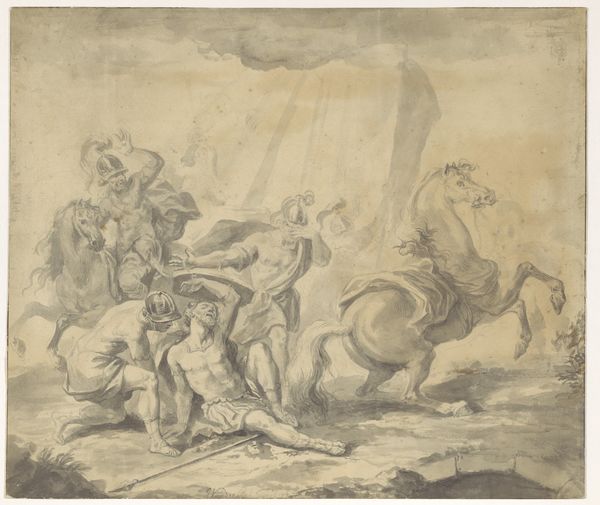
drawing, ink
#
drawing
#
toned paper
#
narrative-art
#
ink painting
#
figuration
#
romanesque
#
ink
#
watercolour illustration
#
history-painting
Dimensions: 317 mm (height) x 376 mm (width) (bladmaal)
Curator: Let’s turn our attention to this intriguing drawing, “Paulus' omvendelse,” or “The Conversion of Paul,” attributed to Hermann Weyer. The piece, created sometime between 1596 and 1630, features ink on toned paper. Editor: Well, visually, it's like a storm, isn't it? Chaotic, full of figures and movement, yet everything sort of spirals towards this central burst of light. Feels… transformative. Curator: The toned paper would have provided a middle ground for Weyer to build his lights and darks. Look closely at how he uses ink washes to create depth, really pulling the viewer into the narrative. One can see the intense production of creating various illustrations and art centered around religious context. Editor: Absolutely. You can almost feel the energy. Paul, or Saul as he was then, is thrown from his horse, blinded by this divine light. The drama! It makes me wonder, what kind of brushes did he use for such delicate ink work? What was his studio like? Were there other versions? It’s that connection, I feel like, we are losing over time with technological advances. Curator: Precisely. Thinking about materiality also leads us to socio-economic aspects. Who commissioned this work? What audience was it intended for? The availability of ink, paper, artistic training – all speaks to Weyer’s position in the society. It has some history painting vibes in it. Editor: It’s got this wonderfully imperfect, raw energy to it that printed reproductions just lack. It invites a certain level of interpretation as the tonal value allows for a story. But knowing the social conditions can deepen, broaden our understanding—make us rethink what art is meant to be. Curator: Precisely! Examining the interplay between materials and artistic intention allows us to connect with a slice of history from the artist’s point of view. It serves as a reminder that art is more than a snapshot in time; instead, a conversation to take and hold with us in modern times. Editor: Yes, and for me, standing here, seeing the actual drawing, feeling its aura – it transcends the historical, brings it alive, transforming, and echoing that burst of light Paul experienced. I like to think that, at that time, Hermann wanted people to really see the message and appreciate the artistry as well.
Comments
No comments
Be the first to comment and join the conversation on the ultimate creative platform.
